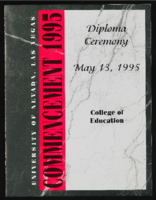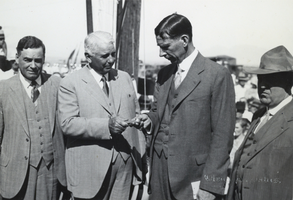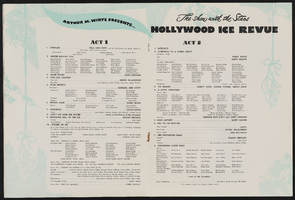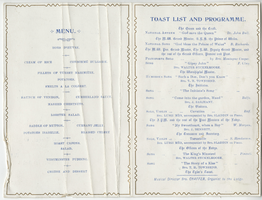Search the Special Collections and Archives Portal
Search Results

University of Nevada, Las Vegas (UNLV) College of Education Diploma Ceremony program
Date
Archival Collection
Description
Commencement program from University of Nevada, Las Vegas Commencement Programs and Graduation Lists (UA-00115).
Text

Photograph of Carl Gray handing Ray Lyman Wilbur the first railroad spur spike for Hoover Dam, circa early 1930s
Date
Archival Collection
Description
Image
Brookman, Eileen
Eileen (Milstein) Brookman (1921-2004) was member of the Nevada Assembly from 1967-1977 and 1987-1990. Small in stature but nicknamed "Queenie" by her admirers, she advocated passionately for the rights of persons with disabilities, minorities, people with low incomes, women, and especially the elderly. Brookman entered state politics in 1962 when she was appointed Indian Commissioner by Governor Grant Sawyer.
Person
Anderson, George
George Robert “Bob” Anderson (1847?-1886?) was an early settler in Southern Nevada. He is best known for being the business partner of James Bernard Wilson. On January 31, 1875, they filed the deed to 320 acres located twenty-four miles west of Las Vegas, Nevada at the base of Sand Mountain in Cottonwood Valley. The property formerly known as ‘Williams Ranch’ or ‘Williams Homestead’ was renamed Sandstone Ranch. There they established a working cattle ranch and a goods delivery service.
Person

Film strip of individuals or Hoover Dam construction, image 011: photographic print
Date
Archival Collection
Description
Image


